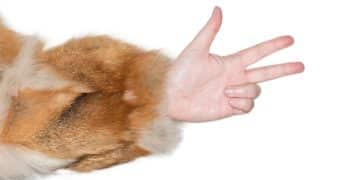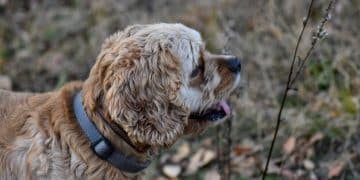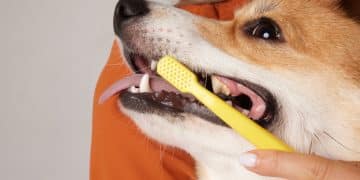Stop Puppy Biting: Expert Techniques for a Gentle Pup in 3 Weeks
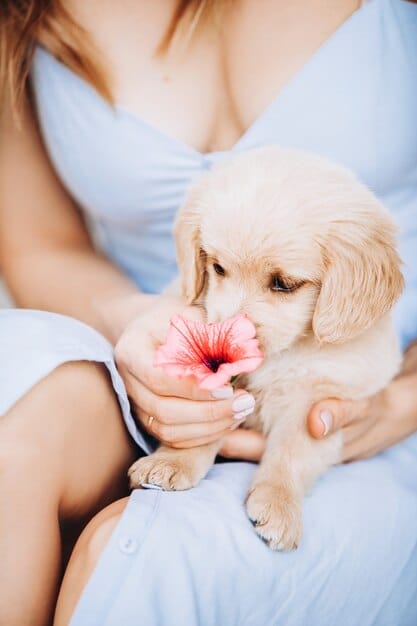
Anúncios
Is your puppy biting too much? Learn expert-approved techniques to curb nipping in just three weeks, fostering a gentler and more enjoyable relationship with your furry friend through consistent training and positive reinforcement.
Bringing a puppy into your home is a joyous occasion, but the initial excitement can sometimes be dampened by sharp puppy teeth. Is your puppy biting too much? It’s a common concern for new dog owners, and fortunately, nipping is often a phase that can be managed and reduced with the right approach.
Anúncios
Understanding Puppy Biting Behavior
Puppy biting is a natural part of their development, serving various purposes from exploration to play. However, it’s essential to understand why puppies bite and how to differentiate normal behavior from excessive nipping.
Why Do Puppies Bite?
Puppies explore the world with their mouths, much like human babies do with their hands. Biting and nipping are their way of investigating textures, feeling sensations, and understanding their environment.
Anúncios
Normal vs. Excessive Biting
It’s normal for puppies to mouth and nip gently during play. However, if the biting becomes too frequent, forceful, or painful, it’s time to intervene and redirect their behavior.
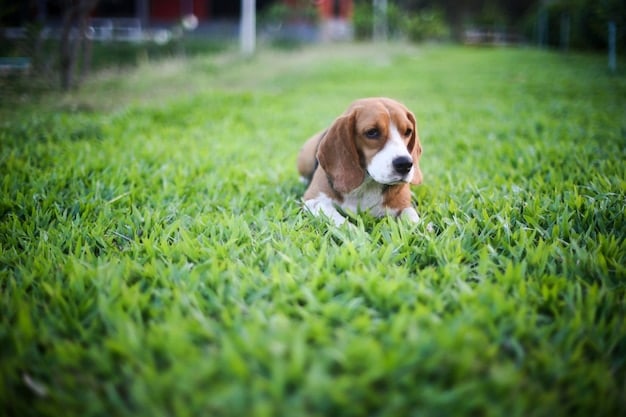
Teething and Biting
Teething is a common cause of puppy biting. As their adult teeth emerge, puppies experience discomfort and try to relieve it by chewing and nipping on objects, including hands.
- Provide plenty of chew toys to soothe their gums.
- Freeze a wet washcloth for them to chew on for extra relief.
- Monitor their play and redirect biting towards appropriate toys.
Understanding the reasons behind puppy biting is the first step in addressing the issue. By identifying the triggers and differentiating normal behavior from excessive nipping, you can tailor your training methods for effective results.
Setting Boundaries and Establishing Rules
Establishing clear boundaries and consistent rules is crucial for curbing excessive puppy biting. Puppies thrive on structure and predictability, which helps them understand what behaviors are acceptable.
Establishing a “No Bite” Rule
Implement a strict “no bite” rule from day one. This means teaching your puppy that biting skin is never allowed, regardless of the context.
Using Verbal Cues
Use clear, consistent verbal cues like “Ouch!” or “No bite!” when your puppy nips. This helps them associate the behavior with your reaction.
Time-Outs
If your puppy continues to bite despite verbal cues, implement a brief time-out. This involves removing yourself from the play or putting the puppy in a designated quiet area for a few minutes.
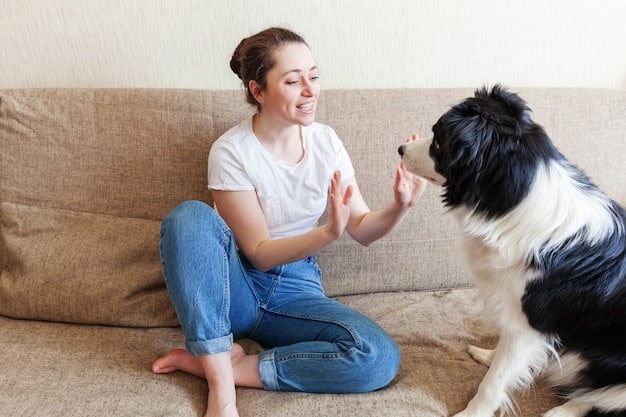
- End the playtime immediately when biting occurs.
- Ignore the puppy for a short period to reinforce the message.
- Resume play only when the puppy is calm and gentle.
By setting clear boundaries and consistently enforcing the “no bite” rule, you create a safe and predictable environment for your puppy, reducing the likelihood of biting incidents.
Redirection and Positive Reinforcement
Redirection and positive reinforcement are effective techniques for redirecting your puppy’s biting behavior towards appropriate outlets.
Offer Chew Toys
Whenever your puppy starts to nip, redirect their attention by offering a chew toy. This teaches them that chewing on toys is acceptable, while biting skin is not.
Positive Reinforcement
Reward your puppy with praise, treats, or affection when they choose to chew on a toy instead of biting. This reinforces the desired behavior and encourages them to repeat it.
Engage in Interactive Play
Interactive play sessions with toys like tug-of-war ropes or fetch balls can help your puppy release energy and satisfy their natural urge to bite and chew.
- Keep a variety of toys on hand to prevent boredom.
- Rotate toys regularly to keep your puppy engaged.
- Supervise play sessions to ensure they remain gentle and controlled.
By redirecting your puppy’s biting behavior towards appropriate outlets and rewarding them for making good choices, you can create a positive and enjoyable training experience for both of you.
Managing Teething-Related Biting
Teething can exacerbate puppy biting, so it’s essential to manage their discomfort and provide appropriate alternatives for chewing.
Provide Cold Chew Toys
Cold chew toys can provide relief for sore gums. Freeze a wet washcloth or offer chilled rubber toys for your puppy to chew on.
Monitor Chewing Habits
Keep a close eye on your puppy’s chewing habits and ensure they’re not targeting inappropriate objects. Redirect them to chew toys whenever necessary.
Gentle Gum Massages
Gently massage your puppy’s gums with your finger or a soft toothbrush to alleviate discomfort. This can also help them bond with you and reduce their urge to bite.
- Use a gentle, circular motion.
- Pay attention to their reaction and stop if they show signs of discomfort.
- Make it a regular part of their grooming routine.
By managing teething-related discomfort and providing appropriate chewing alternatives, you can help your puppy navigate this challenging phase with minimal biting.
Socialization and Bite Inhibition
Socialization plays a crucial role in teaching puppies bite inhibition, which is the ability to control the force of their bites.
Puppy Playdates
Organize supervised playdates with other puppies to allow them to learn bite inhibition through social interaction. When one puppy bites too hard, the other will yelp and stop playing, teaching the biter to be more gentle.
Interaction with Adult Dogs
Expose your puppy to well-mannered adult dogs who can provide gentle corrections if they bite too hard. Adult dogs are often more effective at teaching bite inhibition than humans.
Handling and Exposure
Handle your puppy frequently and expose them to different textures and sensations. This helps them become desensitized to touch and reduces the likelihood of biting out of fear or defensiveness.
- Start with gentle petting and gradually increase the intensity.
- Handle their paws, ears, and mouth to get them accustomed to being touched.
- Reward them with praise and treats for tolerating handling.
Proper socialization and bite inhibition training are essential for developing a well-adjusted puppy who understands the appropriate force to use during play.
Consistency and Patience
Curbing puppy biting requires consistency, patience, and a commitment to ongoing training. Results may not be immediate, but with a consistent approach, you can gradually reduce the frequency and intensity of nipping.
Stay Consistent
Ensure that everyone in the household is on board with the training plan and consistently enforces the same rules and boundaries. Inconsistency can confuse the puppy and undermine your efforts.
Be Patient
Puppy biting may persist for several weeks or even months, so it’s important to remain patient and understanding. Avoid getting frustrated or resorting to punishment, which can damage your relationship with the puppy.
Celebrate Small Victories
Acknowledge and celebrate small victories along the way, such as a day with minimal biting or a successful redirection to a chew toy. Positive reinforcement is a powerful motivator for puppies.
- Keep a training journal to track progress.
- Adjust your approach as needed based on the puppy’s response.
- Seek guidance from a professional dog trainer or behaviorist if you’re struggling.
Consistency and patience are the keys to success when addressing puppy biting. With a steady and supportive approach, you can help your puppy develop into a well-behaved and gentle companion.
When to Seek Professional Help
While most cases of puppy biting can be resolved with consistent training and management, certain situations may warrant professional intervention.
Aggressive Biting
If your puppy is exhibiting aggressive biting behavior, such as growling, snapping, or biting with the intent to harm, seek guidance from a qualified dog behaviorist or veterinarian.
Uncontrollable Biting
If you’ve tried various training methods without success and your puppy’s biting remains excessive and uncontrollable, it’s time to consult a professional.
Underlying Medical Conditions
In some cases, excessive biting may be a symptom of an underlying medical condition, such as pain or neurological issues. A veterinarian can rule out any medical causes and recommend appropriate treatment.
- Keep detailed records of the biting incidents, including triggers and context.
- Video record the behavior if possible to provide more information to the professional.
- Be prepared to discuss your training methods and home environment.
Knowing when to seek professional help is essential for addressing serious biting issues and ensuring the safety of both your puppy and the people around them.
| Key Point | Brief Description |
|---|---|
| 🚫 Establish “No Bite” Rule | Teach that biting skin is never allowed, using verbal cues. |
| 🦴 Redirection with Toys | Offer chew toys to redirect biting; reward desired behavior. |
| 🥶 Cold Chew Toys for Teething | Provide cold chew toys to alleviate teething discomfort. |
| 🐕 Socialization is Key | Allow playtime with other dogs to teach bite inhibition. |
Frequently Asked Questions
▼
Puppies often bite feet as a playful way to engage, mimicking hunting behavior. Redirect this by offering a toy instead and ensuring sufficient play.
▼
The puppy biting phase typically lasts until around six to nine months of age, coinciding with the completion of teething. Consistent training is key.
▼
If your puppy bites too hard, immediately say “Ouch!” and stop playing. This teaches them that biting results in the end of fun interaction.
▼
While genetics can play a role, training and socialization are more significant factors than breed in determining a puppy’s biting tendencies and behaviors.
▼
No, never encourage your puppy to view your hand as a chew toy. This can lead to confusion and reinforce unwanted biting behavior as they grow.
Conclusion
Dealing with a nippy puppy can be challenging, but by implementing these expert-approved techniques, you can effectively curb excessive biting and foster a gentler, more enjoyable relationship with your furry companion. Remember consistency, patience, and positive reinforcement are vital for success.

